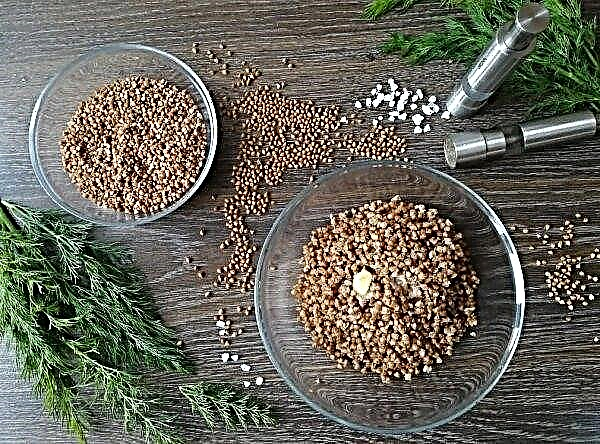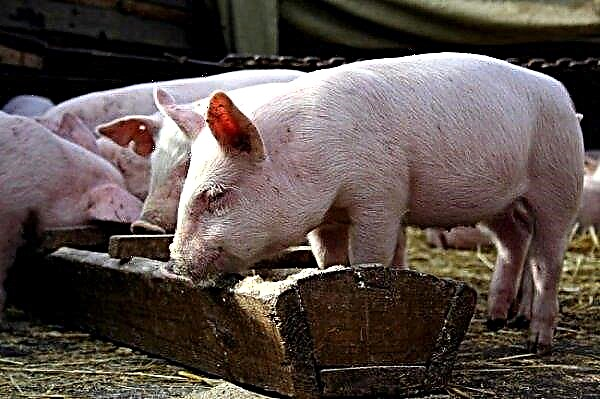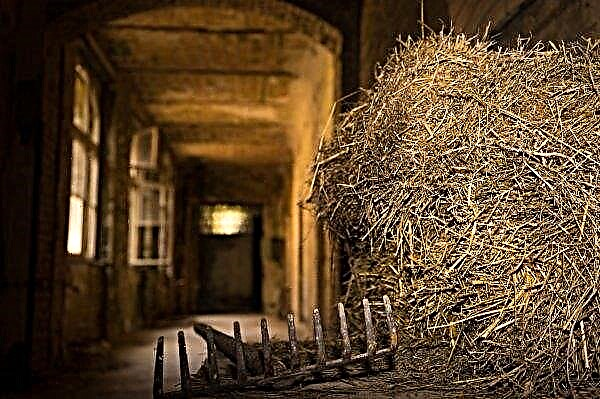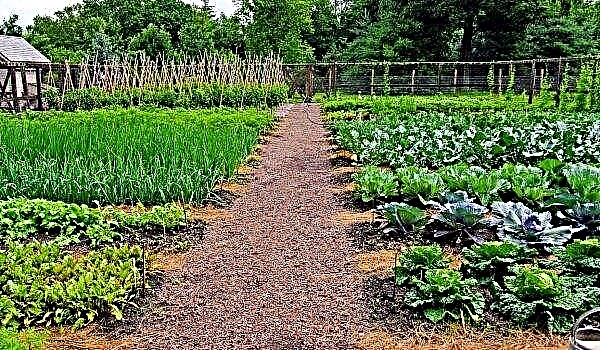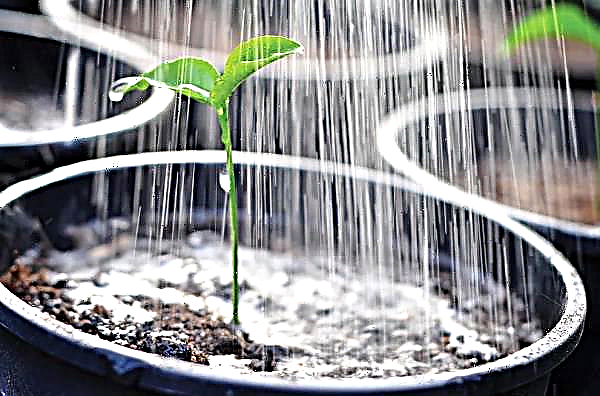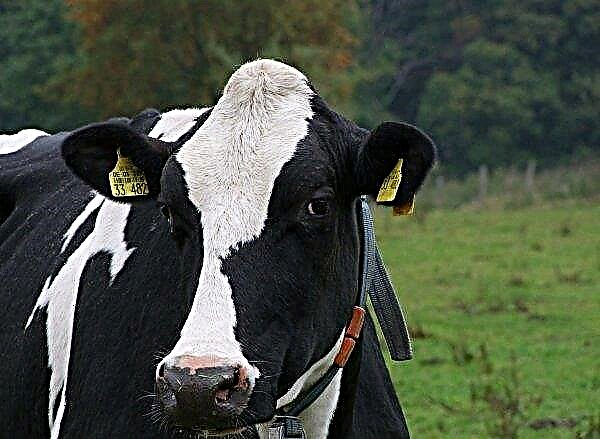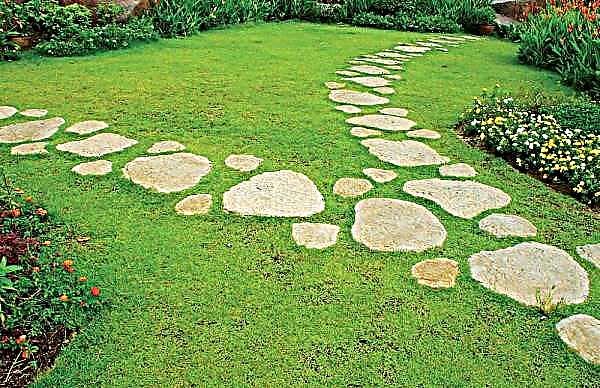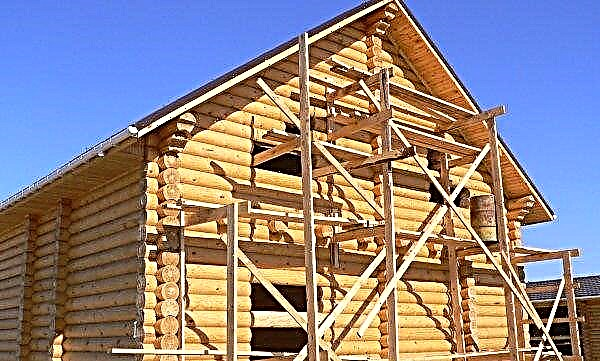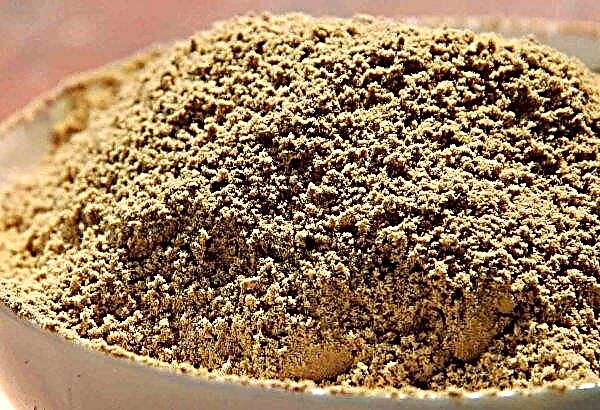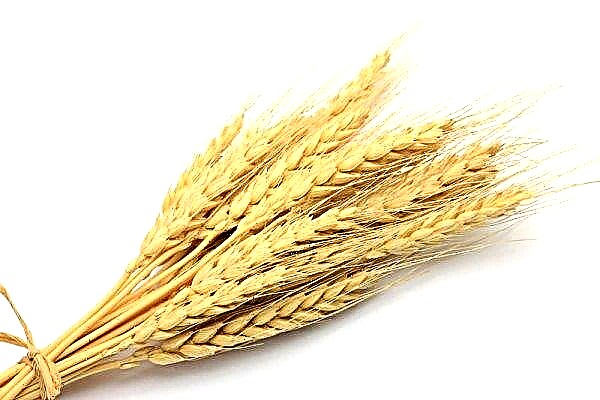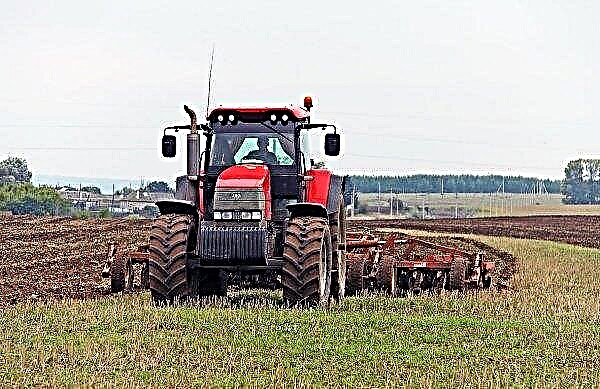Early cabbage perfectly diversifies the table when other vegetables are not ripe. Therefore, varieties ripening earlier than others are always in demand. June cabbage has early ripening and can be eaten since June, for which it got its name.
Description and characteristic
The June cabbage variety was obtained by breeders of the All-Russian Research Institute for Selection and Seeding of Vegetable Crops in 1967. A little later, it was added to the State Register and recommended for all regions.
Did you know? Sulforaphane contained in cabbage reduces inflammation. Therefore, the consumption of this product is useful for inflammation and rashes on the skin, joint pain, and febrile conditions.
Taste and Appearance
This cabbage forms a compact rosette measuring 40-50 cm in diameter. It is slightly elevated above the ground. Light green leaves bubble a little and are slightly wavy at the edges. They can consider a weak wax coating. The very round or flat-headed head of cabbage have a homogeneous structure, medium density (4 points), juicy and tender. They reach an average weight of 1.2–2.5 kg. Individual instances can gain a mass of 5 kg. In the context, heads of cabbage have a light yellow color and medium-sized inner poker.
 In June, small elastic heads are formed weighing from a kilogram to two
In June, small elastic heads are formed weighing from a kilogram to two
June cabbage is grown for fresh consumption and tastes great. It contains 8.1% solids, 3.8% sugars and 45 mg / 100 g vitamin C.
This cabbage variety has proven itself in fresh vegetable salads, which they love to eat in the summer. In them, its delicate crisp leaves show their best.
We recommend reading about the cultivation of other varieties of cabbage:
Ripening dates and crop yields
From the appearance of sprouts of cabbage of the June variety to the collection of heads of cabbage, 90–110 days pass. If the culture was grown in seedlings and was planted on the beds in the first days of May, then it is harvested at the end of June. Cabbage is characterized by the simultaneous ripening of the crop and can be grown for sale.
The crop is 3–7 kg per m². The marketability of heads of this variety is high - 97%.
 June cabbage - a variety of domestic selection that has proven itself among farmers
June cabbage - a variety of domestic selection that has proven itself among farmers
Resistance to frost and disease
June cabbage can withstand temperatures down to -2 ... -5 ° C. It is not damaged by the cabbage fly and is medium resistant to cracking. She is susceptible to keel.
Important! Kila spreads through the soil and can leave the gardener without a cabbage crop. It is very common on acidic soils. Planting solanaceous and lilac for several years kills the keel pathogen.
Advantages and disadvantages
- The June cabbage variety has the following advantages, interesting for gardeners:
- early production;
- high taste;
- friendly ripening of heads of cabbage;
- tolerates frost well;
- resistance to cracking;
- the ability to get your own seeds;
- good commercial quality.
- Most of the varietal disadvantages are inherent in all early varieties:
- poor keeping quality;
- unsuitability for pickling and billets;
- poor keel resistance.
Cultivating varieties
For early production, June cabbage is planted in seedlings. In the middle zone of the Russian Federation and Moscow region, early varieties are sown from late February to late March. In the Urals and Siberia, they are sown for seedlings no earlier than mid-April. Residents of the southern regions can sow them from mid-February.
Video: Growing Early Cabbage
Preparing planting material
Own seed or purchased by weight should be calibrated in a 3% saline solution. Hollow seeds will pop up, while normal seeds will go down. Then they should be kept for disinfection for 30 minutes in a weak solution of potassium permanganate. After that, the seeds are washed well and dried on a napkin.
 June cabbage can be grown in all regions of the country due to its cold resistance
June cabbage can be grown in all regions of the country due to its cold resistance
You can stratify the seeds to improve their germination and resistance to cold. For this, the seed material, wrapped in a damp cloth, is kept for one day in the refrigerator.
If you bought seeds in a bag, then you should familiarize yourself with information about their processing or its absence.
Did you know? Mankind has been growing cabbage since the Stone Age. This culture was cultivated in ancient Egypt. The ancient Greeks and Romans totaled up to 10 of its varieties.
Before seed treatment should be stocked with containers for seedlings. It can be boxes, peat tablets, individual pots (peat or plastic), cassettes. Soil for seedlings can be bought in a store or made by yourself. For example, mix 3 parts peat, 1 part sod land and add some sand. A homemade mixture must be decontaminated (calcine in the oven or pour potassium permanganate). In any case, it should be a loose nutrient soil with neutral acidity.
 Oven disinfection in the oven
Oven disinfection in the oven
Growing seedlings
First, the soil is watered before sowing the seeds. In separate containers plant 2 seeds of cabbage. If a pick is planned and a seedling box is used, then grooves of 1 cm depth are made in it at a distance of 3 cm from each other. Then seeds are distributed over them, leaving a gap of 1-2 cm between them.
Video: Planting the seeds of June cabbage on seedlings
Capacities are covered from above and put in a warm place (+ 18 ... + 20 ° С). Sprouts of cabbage at this temperature will appear after about 5 days. When they appear seedlings are transferred to the most illuminated place with a temperature of + 10 ... + 12 ° C. After a week, the temperature regime is increased to + 15 ... + 17 ° C. Daylight hours should be between 12-15 hours. Seedlings are regularly watered, but without waterlogging. A pick is done 2 weeks after emergence, if it was planned.
Do three top dressings:
- a few days after the dive;
- 2 weeks after the first feeding;
- a couple of days before landing on the beds.
Did you know? Cabbage contains only 24 kcal per 100 g and is recommended in diets for weight loss, and cabbage juice, in addition, reduces blood sugar.
For top dressing, a ready-made complex fertilizer is bred or the mixture is made on its own. For the first feeding, 4 g of superphosphate, 2 g of ammonium nitrate and 1 g of potassium salt are dissolved in 1 liter of water. For subsequent feeding, the concentration of these fertilizers is doubled. During the third feeding, the dose of potassium fertilizer is adjusted to 7-8 g, since this element contributes to the survival of seedlings.
2 weeks before planting, seedlings of cabbage begin to be placed on the balcony for hardening. First, they keep her there for a couple of hours in the afternoon, and then gradually bring the time spent cabbage in the fresh air to constant.
 When the plant is in pots or cassettes, it needs regular and balanced nutrition
When the plant is in pots or cassettes, it needs regular and balanced nutrition
Technology for planting seedlings in open ground
First of all, you should take care of the landing place in advance. It should be smooth and well lit by the sun.
Cabbage loves fertile loamy soils with a neutral or slightly acidic reaction. You should not plant this plant culture, where cabbage and root crops grew. Good predecessors are cereals, onions, legumes, cucumbers, zucchini.
Dig the selected area in the fall and make fertilizers from humus and wood ash. The soil is also fed with mineral fertilizers - superphosphate and potassium chloride. In the spring, the plot is loosened and fertilized again.Important! Acceptable acidity for white cabbage is a range of 6.3–7.8 pH. Too acidic soils lime.
Seedlings at the time of planting should be 30–45 days old from emergence of seedlings and 3-5 true leaves. The air should warm up to + 15 ° C. Usually landing occurs in late April or early May. In the prepared wells, the plant is not placed deep, to the point of growth.
 Recommended planting pattern 40 × 60 cm
Recommended planting pattern 40 × 60 cm
Plant care
After transplanting seedlings of June cabbage, proper care for it should be established.
Irrigation intensity
Cabbage does not tolerate drought. To get a good harvest, you need to water it regularly. The soil should be moistened 0.3-0.4 m deep in the ground. Planted seedlings are first watered 3 times in 7 days, observing a ratio of 8 liters per 1 m². Then, the irrigation intensity is reduced to 1 time per week based on the proportion of 12 liters per 1 m².
Irrigation is best suited for irrigation. Therefore, a nozzle is used for the hose. A drip irrigation system is also great.
Watering is largely dependent on weather conditions. During heavy rains, it is stopped. But during a severe drought, you can moisturize every other day. 14 days before harvesting, hydration is stopped. Do not forget about watering during the laying of forks. At this time, in order not to cause cracking of heads, watering is carried out not by sprinkling.
 The first time watering should be carried out at least 1 time per week
The first time watering should be carried out at least 1 time per week
Loosening, weeding
After moistening the soil, the planted area should be loosened to a depth of about 7 cm. In the process of loosening, weed must be removed, which draws moisture and nutrients from the soil.
Important! Planting with cabbage should be spud. This will help form a strong root system. The first hilling is carried out 3 weeks after planting. Then this process is repeated after 10 days.
Disease and Pest Prevention
Unfortunately, cabbage of this variety can be affected by some diseases and pests. Therefore, in order to get a quality crop, it is necessary to carry out preventive measures for their appearance. But if the infection did occur, then at the first sign it is necessary to quickly take appropriate treatments to save the crop.
Consider the main diseases of cabbage:
- Blackleg. The plot in the basement becomes black. Plant crops slow down growth and development, and then die. The disease can provoke thickening of seedlings and moistening with cold water. Too affected plants are removed and disposed of. Treatments with Fitosporin or 1% Bordeaux liquid should be carried out.
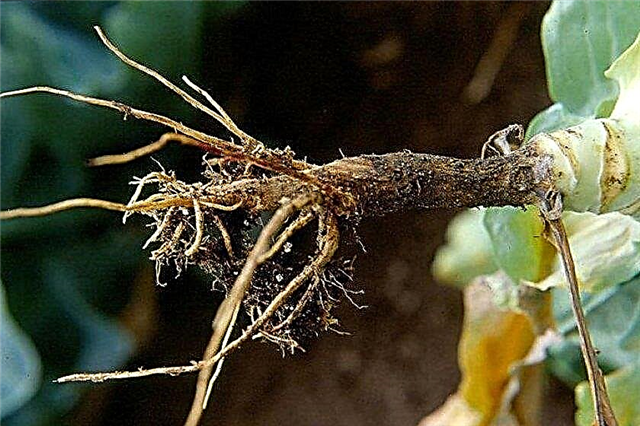
- Kila. Signs are growths that prevent the roots from developing. Plant growth slows down, the lower leaves begin to dry. Affected specimens should be torn out, and the planting together with the soil should be treated with 1% Bordeaux mixture or with Hom, Tiovit Jeta preparations. After 7-10 days, the treatment is repeated.
 Often, keel can be affected by seedlings. The disease spreads rapidly throughout the garden
Often, keel can be affected by seedlings. The disease spreads rapidly throughout the garden - Downy mildew. Excessive moisture provokes the disease. Yellow spots appear on the leaves, and a gray coating is found on the bottom. Leaflets undergo deformation and die. It helps dusting with ash landings. It should also be sprayed with the drug Fitosporin.

Cabbage can be attacked by the following pests:
- Aphid. This small insect drinks the juice of the plant, causing loss of color and curling of the leaves. Moreover, this pest actively carries various infections and viruses. The chemical treatments “Komandor”, “Intavir”, “Actellik” will help. Spraying with nettle infusion, wormwood or an ash-soap solution (per 10 l of 300 g of ash, 400 g of soap) also helps well.

- Cruciferous flea. It feeds on cabbage leaves, gnawing small holes in it. This causes the plant to dry. Spraying with chemicals "Karate", "Actellik". The treatment with garlic and soap solution helps well.

- Belianka. Insects, and especially their larvae, quickly eat cabbage leaves and can reach the head of cabbage. As a result, leaf plates turn yellow and dry. It is necessary to collect the tracks, remove the eggs. For the struggle, they are treated with Fitoverm, Intavir with an interval of 7-10 days.
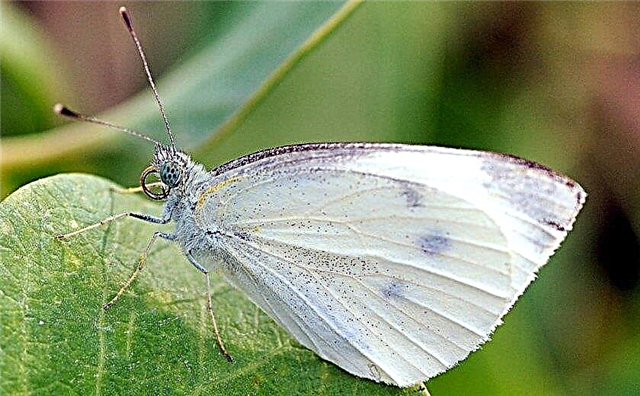
To prevent the occurrence of pests and diseases, the following measures should be followed:
- in the autumn they clear the site of the remains of vegetation;
- digging the soil before a cold period;
- humidification is carried out by sprinkling;
- the landing area is sprinkled with ash;
- Do not cost to thicken the landing;
- comply with crop rotation rules;
- carry out seed disinfection. For this purpose, a solution of "Immunocytophyte" is well suited;
- disinfect the soil before sowing;
- tear out and dispose of diseased specimens;
- make sure that there is no stagnation of water in the soil.
Did you know? Sulforaphane has an anti-cancer effect, and glucosinolates, which are also found in cabbage leaves, have anti-carcinogenic properties and fight free radicals. This makes cabbage consumption an excellent cancer prevention.
Harvesting and storage
You can start harvesting in the last days of June, that is, after 56-60 days from planting seedlings on beds. When the head of cabbage grows enough, and from below the leaves begin to turn yellow, it can be removed from the garden. Harvest should be done in a timely manner, since if the process is delayed, the heads of cabbage can deteriorate. It is advisable to start collecting in the morning in dry weather. This vegetable is cut with a well-sharpened knife so that the cutter is 2 cm, leaving 3 leaves.
 June cabbage is intended for consumption in the summer and is not suitable for long-term storage. It should not be stored for more than 14 days.
June cabbage is intended for consumption in the summer and is not suitable for long-term storage. It should not be stored for more than 14 days.
June cabbage is an old proven cultivar of early production and good yield. It should be grown in seedlings. Planting care is no different from agricultural techniques of other varieties of this crop.
Network user reviews
ADVANTAGES: Early maturity, resistance to frost.
DISADVANTAGES: Tendency to crack heads, requires timely cleaning.
My friends, the planting season is approaching. And which of us does not like to spoil ourselves with vitamin products as soon as possible. Early cabbage enjoys continued success in this capacity. It is suitable for fresh consumption in salads as well as for cooking. My constant choice for many years is the June cabbage. I also try regularly the seeds of various new varieties, including those marked F1. So far, I have not found a better old and proven variety. At the end of April, I sow part of the seeds for seedlings at home (there is no greenhouse) to get the earliest harvest. The rest immediately into the open ground when the ground warms up. This variety can withstand the cold, because the return frosts are not afraid of him. In late June - early July, small, up to two kilograms of cabbage ripen. The only drawback of this variety is its tendency to crack, so you need to cut cabbage on time. If we leave the bottom two leaves without breaking off when cutting, we can get a second crop of small heads of cabbage. Friends, if you have not yet decided on the choice of seeds for early ripening cabbage, I recommend the June cabbage, it is guaranteed to provide you with early ripening tender heads of cabbage with such beneficial fiber and high ascorbic acid content.


 Often, keel can be affected by seedlings. The disease spreads rapidly throughout the garden
Often, keel can be affected by seedlings. The disease spreads rapidly throughout the garden



